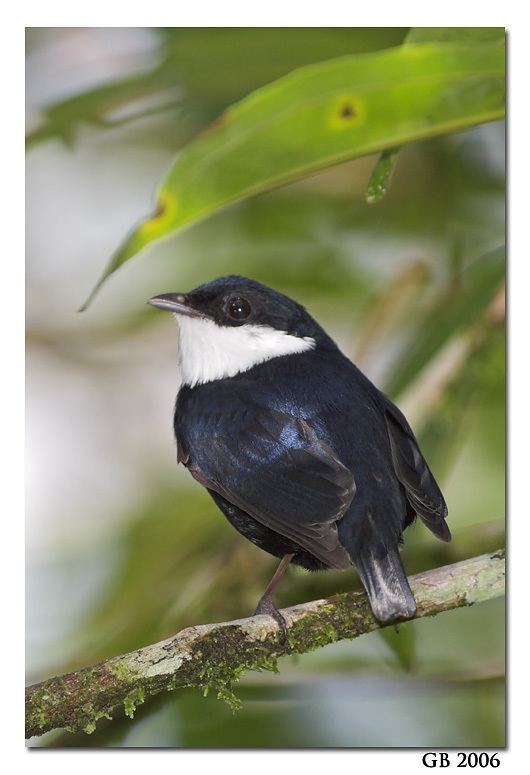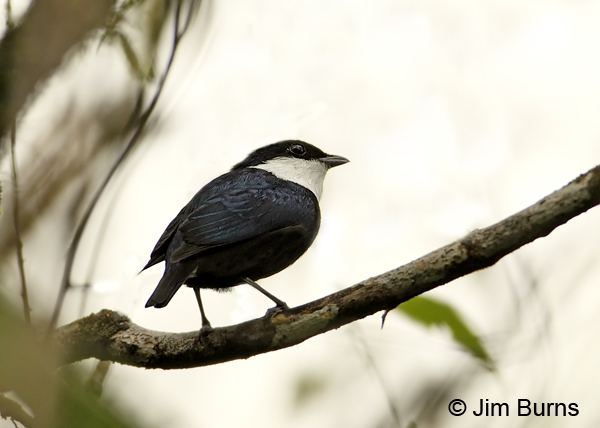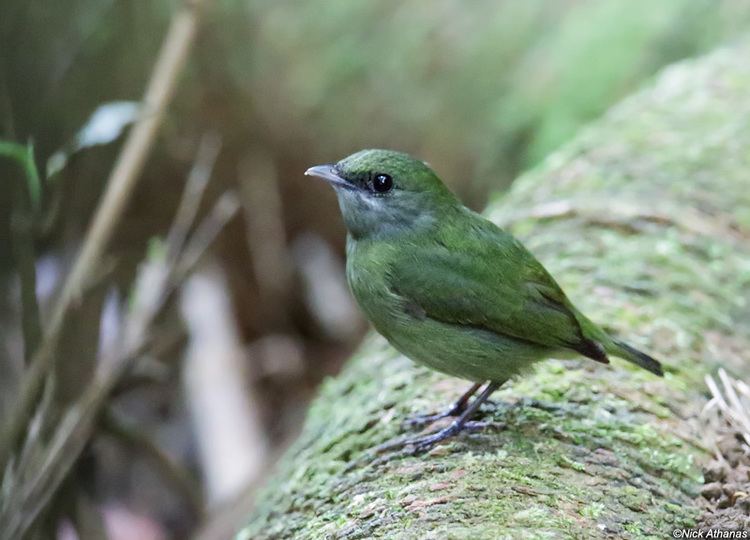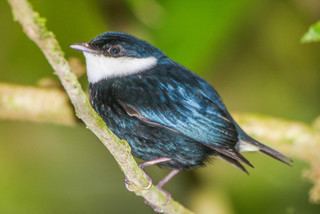Phylum Chordata Rank Species | Family Pipridae Scientific name Corapipo altera Higher classification Corapipo Order Passerine | |
 | ||
Similar Manakin, Bird, White‑bibbed manakin, White‑collared manakin, Orange‑collared manakin | ||
White ruffed manakin corapipo altera darien panama
The white-ruffed manakin (Corapipo altera) is a passerine bird in the manakin family. It is a resident breeder in the tropical New World from eastern Honduras to northwestern Venezuela. Its typical habitat is wet forest, adjacent clearings and tall secondary growth. It is a small, plump bird about 10 centimetres (4 in) long. Males have glossy blue-black plumage with a white erectile ruff on the throat. Females and juveniles are olive-green with a grey throat. At breeding time, males are involved in lekking behaviour on the forest floor during which they puff out their neck feathers. This is a fairly common species with a wide range, and the International Union for Conservation of Nature has rated its conservation status as being of "least concern".
Contents
- White ruffed manakin corapipo altera darien panama
- Distribution and habitat
- Description
- Ecology
- Status
- References

Distribution and habitat
It is common in the lowlands and foothills breeding mainly between 400–600 m on the Caribbean slope and up to 1500 m on the Pacific slopes. It descends to the lowlands in the wet season. This is a species of wet forest, adjacent clearings and tall secondary growth.
Description

The white-ruffed manakin is, like its relatives, a compact short-tailed bird with a heavy hooked bill, dark legs and striking male plumage. It is typically 10 cm long and weighs 12.5 g (9 – 14 g, males are smaller).

The adult male is mostly glossy blue-black with a white erectile ruff on the throat and sides of the neck. His wings are modified, with a very short outer primary. The male’s call is a thin s-e-e-e-e-e or, in display, a twangy shree-up. As part of a display component, the wings are used to make a dull snap like a breaking twig, as with other manakins.
The female and young males are olive-green with a grey throat.
Ecology

Like other manakins, this species has a fascinating breeding display at a communal lek. Single or multiple adult males one at a time descend in a slow fluttering flight on to a mossy fallen log with tail raised and ruff spread, and then give a little jump. Young males often join in some displays which can often lead to 4-5 males displaying together. The female lays two brown-speckled white eggs in a shallow cup nest 5–7 m high in a horizontal tree fork. Nest-building, incubation for 18–21 days, and care of the young are undertaken by the female alone, since manakins do not form stable pairs.

The white-ruffed manakin feeds low in the trees on fruit and some insects, both plucked from the foliage in flight. It forms loose groups in its breeding areas, but is more solitary in the lowlands, although it may join tanagers and others in mixed-species feeding flocks.
Status
One study in Costa Rica found that the white-ruffed manakin appears to have maintained substantial genetic connectivity despite habitat fragmentation. This suggests that manakins may have no trouble dispersing across non-forest habitat patches.
This bird has a very wide range, is fairly common and is presumed to have a large total population. The population trend is thought to be stable and the International Union for Conservation of Nature has rated the bird's conservation status as being of "least concern".
